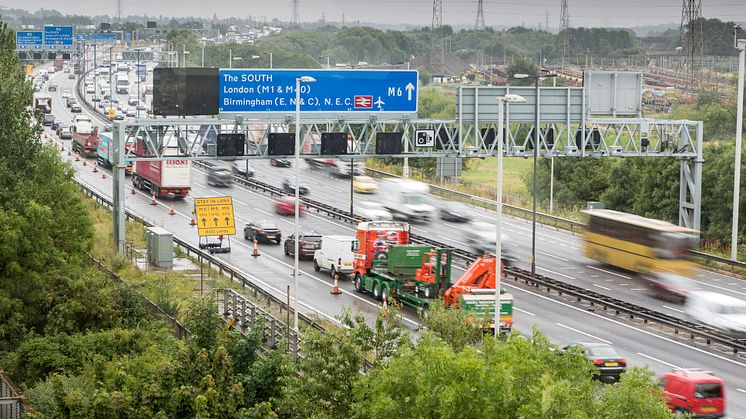
News -
RAC welcomes inquiry into all lane running smart motorways
The following text is taken from the RAC Report on Motoring 2015 and outlines the RAC's position with regard 'all lane running' smart motorways:
Smart motorways, previously known as managed motorways, are becoming increasingly common in England. They are designed to increase motorway capacity and cut congestion through the introduction of variable speed limits and the use of the hard shoulder as a running lane, particularly during busy periods.
The programme was originally piloted on a stretch of the M42 in the Midlands, and ‘smart’ sections of motorway can now be found on the M1, M4, M5, M6 and M25. There appears to be good support for the introduction of smart motorways among motorists: a majority (56%) agree they are an effective way of increasing motorway capacity.
In the RAC’s view, a question mark remains, however, over the safety of the newly introduced ‘all lane running’ configuration of smart motorways. In the ‘dynamic hard shoulder’ configuration – used on the M42 pilot and the majority of other smart motorways now in operation – the hard shoulder is only opened for use as an extra running lane at busy times when extra capacity is needed, while under the all lane running configuration, the hard shoulder is permanently converted into an extra lane.
Dynamic hard shoulder smart motorways have been in use for some time, and have been shown to be significantly safer than conventional motorways with three lanes and a hard shoulder. This is due to a combination of reasons including close monitoring by Highways England through CCTV, variable speed limits that slow traffic down in busy periods and easy-to-reach Emergency Refuge Areas (ERAs) for use when users break down or are involved in an incident when the hard shoulder is in use as a running lane: on the M42, for example, ERAs are spaced between 500m and 800m apart.
But on later implementations of the dynamic hard shoulder configuration and on the new all lane running sections, the ERAs are further apart at distances of up to 2.5km. In this situation, a driver whose vehicle suffers a catastrophic failure will have little alternative to stopping in the inside running lane and waiting for Highways England to spot them and close the lane to traffic. On a motorway with a dynamic hard shoulder, the inside running lane reverts to a hard shoulder and on all lane running, red crosses are displayed over the inside lane to instruct drivers to move over to the next lane.
Unfortunately, early experience suggests other drivers are less inclined to obey these lane closure signs on an all lane running section of motorway than when the hard shoulder is closed to traffic on a smart motorway with the dynamic hard shoulder configuration. This places the casualty vehicle, its occupants and those providing assistance (the emergency services or roadside assistance providers) at greater risk. All new sections of smart motorway are expected to be based on the all lane running configuration.
The RAC therefore calls on Highways England to monitor accident and casualty rates closely on those sections of smart motorway where all lanes running is in use and to consider reconfiguring these and planned sections of all lanes running motorway to have a dynamic hard shoulder.
Relatively few motorists have experience of driving on both smart motorway configurations and it is evident that the associated safety benefits are not generally understood. A fifth (20%) of drivers responded that they believe that the dynamic hard shoulder configuration is less safe than a conventional motorway with a permanent hard shoulder, and a slightly higher percentage (25%) took a similar view for the all lanes running variant compared to a conventional motorway.
The RAC welcomes the Road Investment Strategy and supports the introduction of more smart motorways. However, the RAC has concerns regarding the safety of the ‘all lanes running’ configuration of smart motorways and therefore calls on Highways England to monitor the safety performance closely where all lane running is in use and to consider reverting to the dynamic hard shoulder configuration for these and other sections planned for all lane running.

